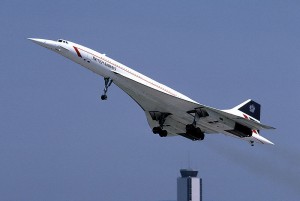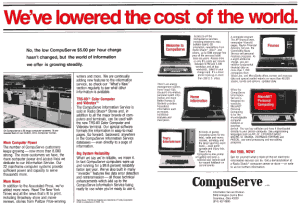Archive for 2024
Google’s Fake Birthday
September 27th, 1998
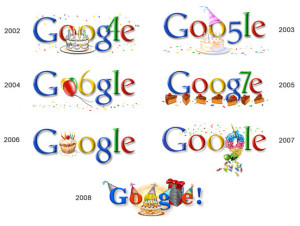 For some peculiar reason, Google has at times chosen the date of September 27th as their birthday, even though it is more officially September 4th or 7th. Google has no explanation for celebrating their birthday on different days over the years other than to say:
For some peculiar reason, Google has at times chosen the date of September 27th as their birthday, even though it is more officially September 4th or 7th. Google has no explanation for celebrating their birthday on different days over the years other than to say:
Richard Stallman Announces the GNU Project
Promising a “Free Unix”, Richard Stallman announces that he is going to write a complete Unix-compatible software system he calls GNU (which stands for Gnu’s Not Unix). This is a significant milestone in the history of open source and free software. Stallman would later found the Free Software Foundation.
Concorde Breaks Atlantic Crossing Speed Record
The supersonic aircraft Concorde makes its first non-stop Atlantic crossing and sets a new speed record in the process. Flying from Washington D.C. to Paris, France in 3 hours 32 minutes at an average speed of 954 miles-per-hour, the Concorde cut the old speed record in half.
The First Personal Computer You Never Heard Of
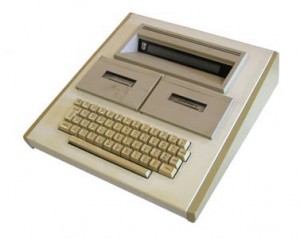 September 25, 1973
September 25, 1973
Micro Computer Machines of Canada introduces their MCM/70 microcomputer at a programmer’s user conference in Toronto. Possibly the earliest commercially manufactured device that can now be considered a personal computer, the MCM/70 gained customers at companies such as Chevron, Mutual Life Insurance, NASA, and the US Army. The company worked closely with Intel on the design of their computer and made very early use of the Intel 8008 processor, of which the basic design was used for the future Intel 8086. However, failing to generate venture capital in the Canadian marketplace, the MCM/70 never gained significant market acceptance and by the time the Apple II and other early personal computers were being released, the MCM/70 was relegated to a footnote in history.
CompuServe Launches MicroNET
CompuServe launches the first consumer-oriented online information service, which they called MicroNET. This marked the first time a consumer had access to services such as e-mail. The service was not favored internally within the business-oriented CompuServe, but as the service became a hit, they renamed the service CompuServe Information Service, or CIS. By the mid-1980’s CompuServe was the largest consumer information service in the world and half their revenue came from CIS. In 1989 CompuServe connected its proprietary e-mail system to the Internet e-mail system, making it one of the first commercial Internet services. However, CompuServe did not compete well with America On-Line or independent Internet Service Providers in the 1990’s and lost its dominant market position.
The First Android Introduced
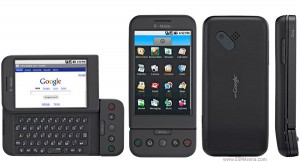 September 23, 2008
September 23, 2008
Google and T-Mobile introduce the T-Mobile G1 (also known as the HTC Dream), the world’s first Android-based smartphone. By raw sales numbers, today Android is the world’s most popular smartphone platform.
Computer Code Protected by Copyright
 September 22, 1986
September 22, 1986
The US District Court for the Northern District of California rules that computer code is protected under copyright law. The ruling stems from the case NEC Corp. v. Intel Corp, which was basically a battle over who had the right to produce x86 processors. The ruling, while finding that Intel had copyright protection for the code in their processors, also found that reverse-engineering code was also legal and therefore NEC did not violate Intel’s copyright in producing their own x86 processors. This ruling that code could be copyrighted changed the landscape, for better or worse, of software and computer development.
Galileo Completes Jupiter Mission
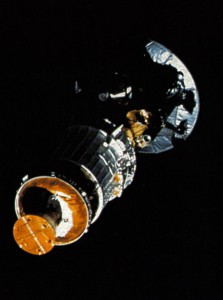 September 21, 2003
September 21, 2003
After fourteen years in space, eight of those as the first man-made object orbiting Jupiter, the unmanned NASA spacecraft Galileo is sent into the atmosphere of the giant planet. NASA decided to end Galileo’s mission in this manner in order to avoid any possibility of it colliding with one of Jupiter’s moons and potentially contaminating it with bacteria from Earth. How sanitary of them.
First FORTRAN Program Runs
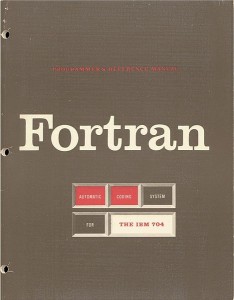 September 20, 1954
September 20, 1954
The first FORTRAN program is executed. FORTRAN was developed by IBM scientists who were looking for a better way to program the IBM 704 mainframe computer. It quickly became the dominant programming language for scientific and engineering applications and still is used today, especially in the area of high-performance computing.
Turn That Frown … Sideways
![]() September 19, 1982
September 19, 1982
In a posting made to a Carnegie Mellon bulletin board, Professor Scott Fahlman proposes the first known use of emoticons (also known as smilicons or smileys). While the use of emoticons became widespread during the 80’s and 90’s, their origin remained unknown until September 10, 2002, when the original message was retrieved from backup tape.
The following is the original message:
19-Sep-82 11:44 Scott E Fahlman :-) From: Scott E Fahlman <Fahlman at Cmu-20c> I propose that the following character sequence for joke markers: :-) Read it sideways. Actually, it is probably more economical to mark things that are NOT jokes, given current trends. For this, use :-(
Side note, personally I may have been the first to use a smilicon in printed form when I put one in my high school yearbook with my senior quote under my picture. Edwardsville High School Class of 1992!


